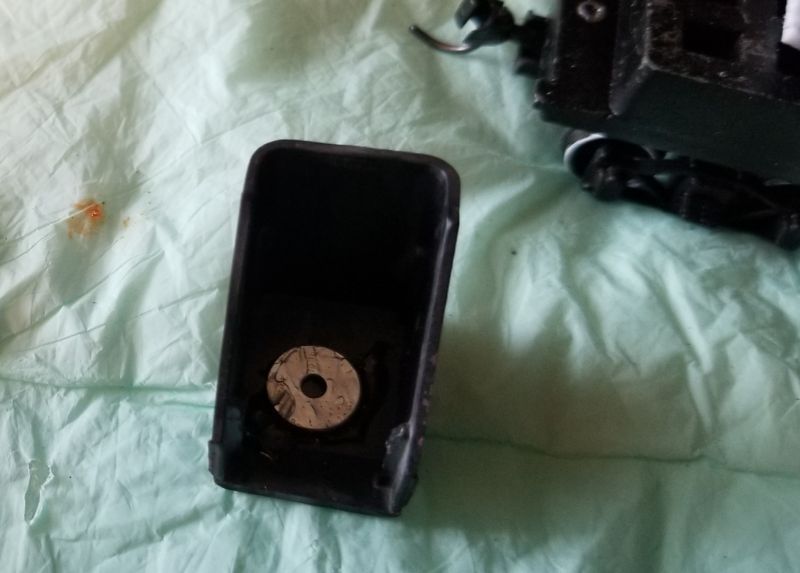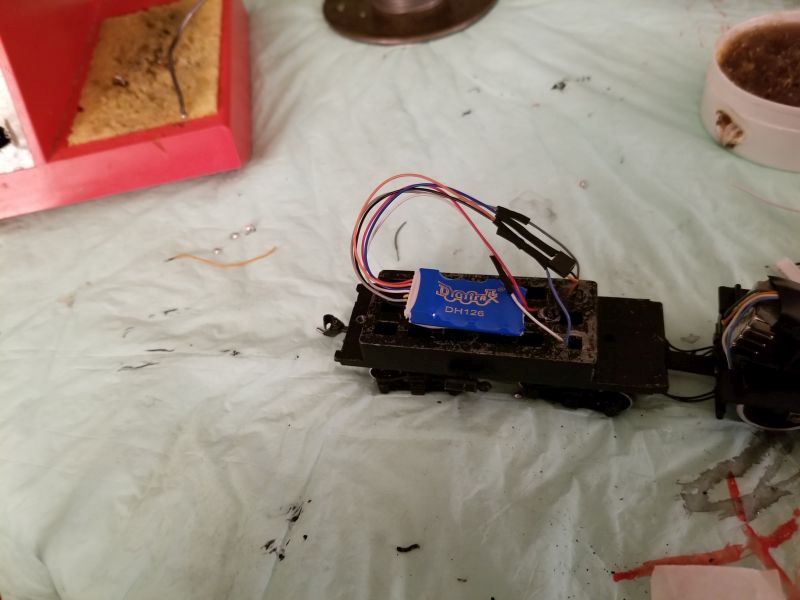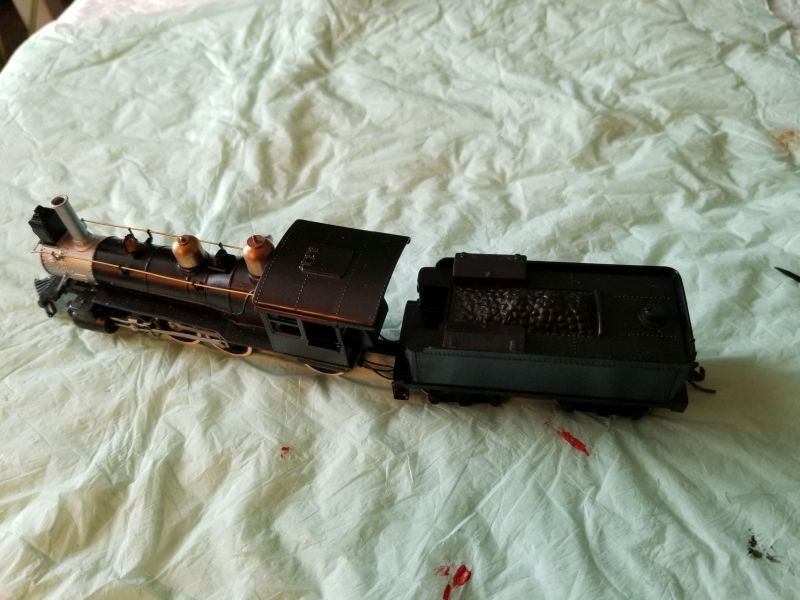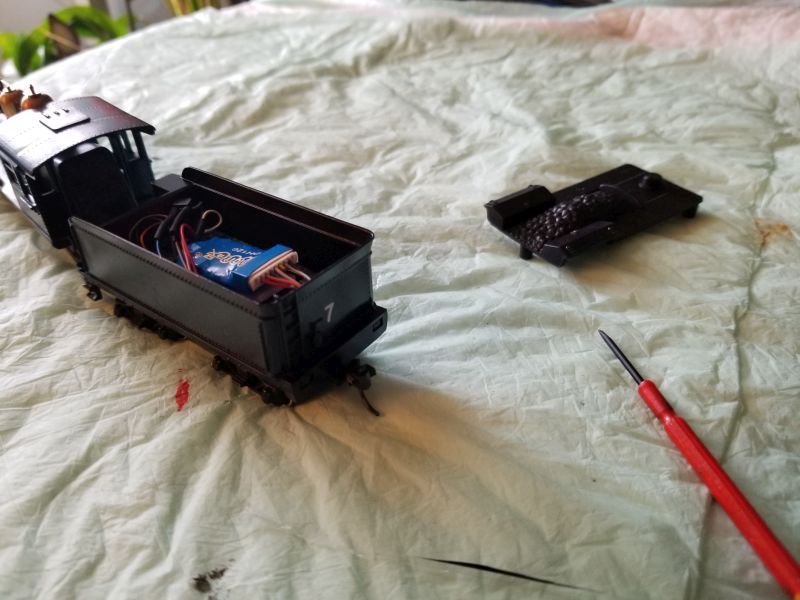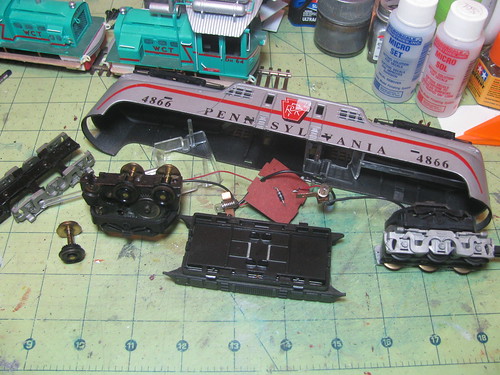The headlight top (cap), rear driver, and smoke-box front came from another basket case 10 wheeler. That one had also been broken, and the previous owner used generous amounts of tube glue to repair it. With the blobs of glue oozed down the outside of the boiler, that shell is trashed. But, with a purchase price of a few dollars, it was a good source of the odd bits that I needed to rescue this one.
I haven’t decided yet what number to put onto this one. I am thinking of 66, because the 1966 Tyco catalog is the oldest Tyco catalog I have seen that lists the 10 wheeler.
As for a road name, I was going to letter it for the Union Pacific, so it can be assigned to my Union Pacific Roundhouse Sierra cars, but maybe it would be better to not put any road name on it, so it can fill whatever duty I want. The theme of my modules is a railroad museum, but I don’t even want to put the museum name on the thing. Why not? Because I don’t think “Ferroequine Historiology Cynosure” would fit well onto the thing.
